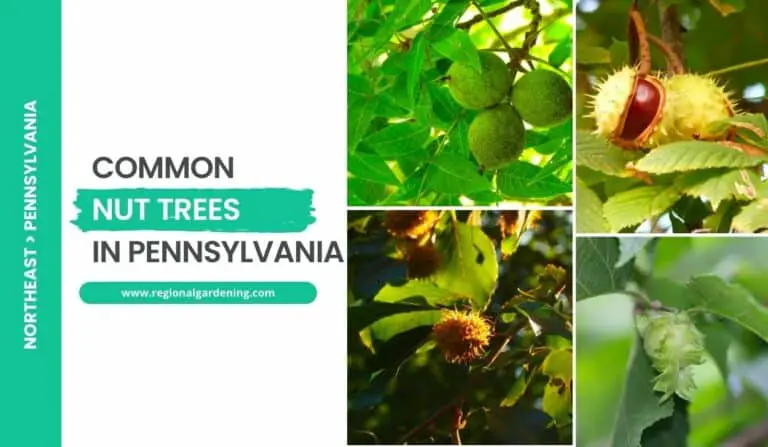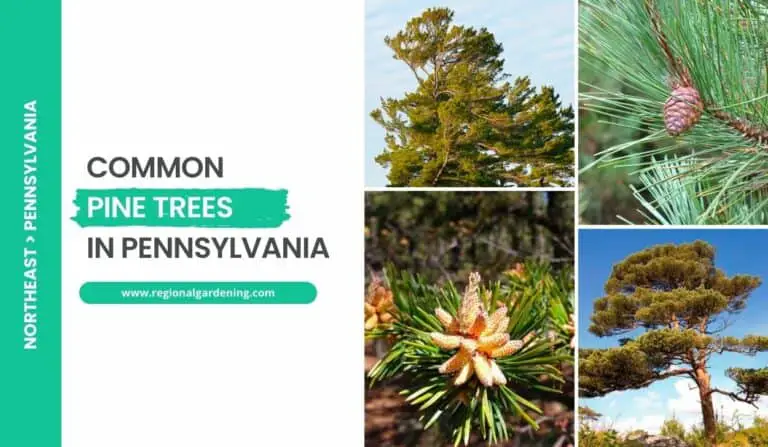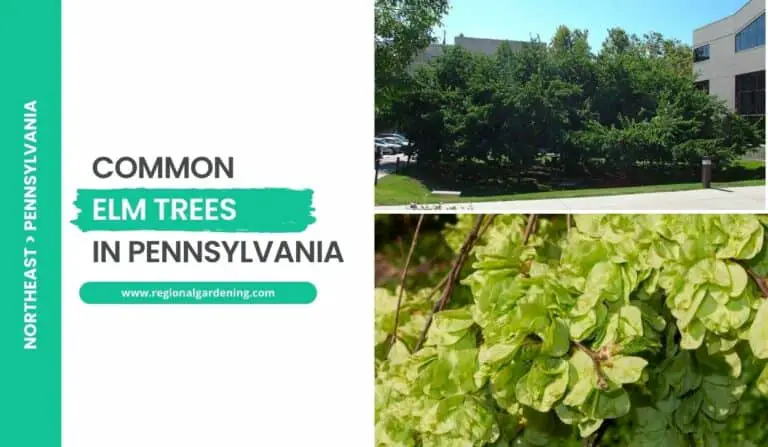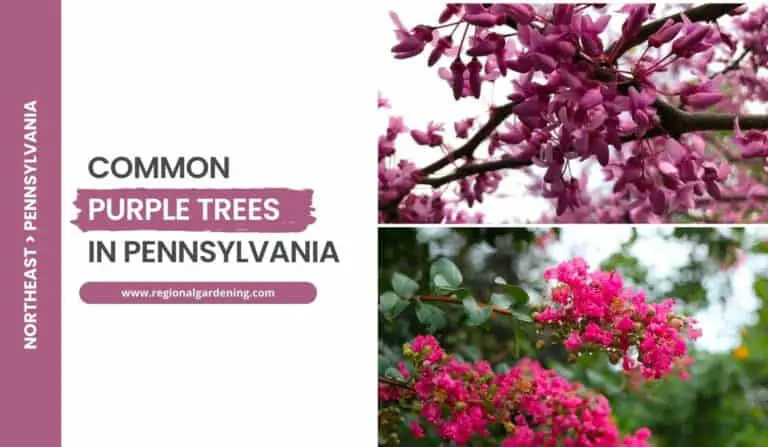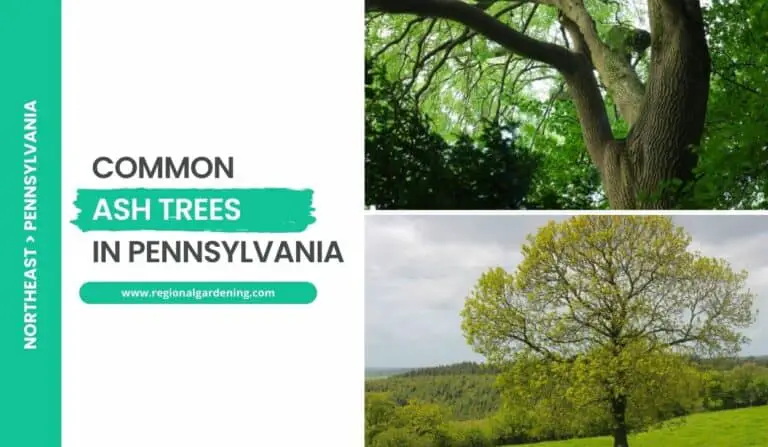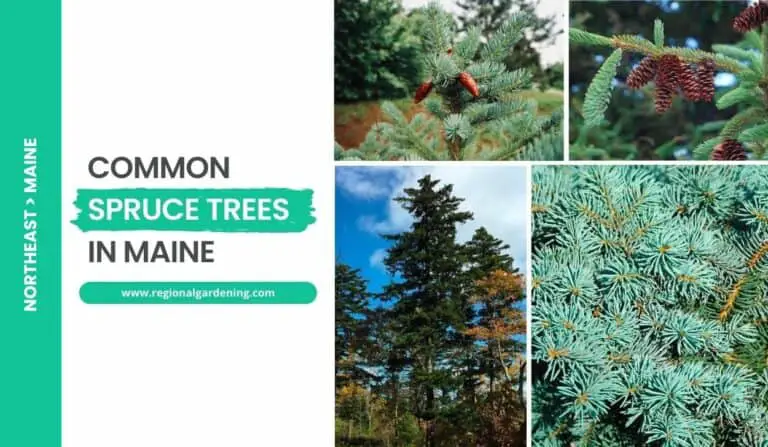2 Native Aspen Trees In Pennsylvania (Photos & ID Guide)
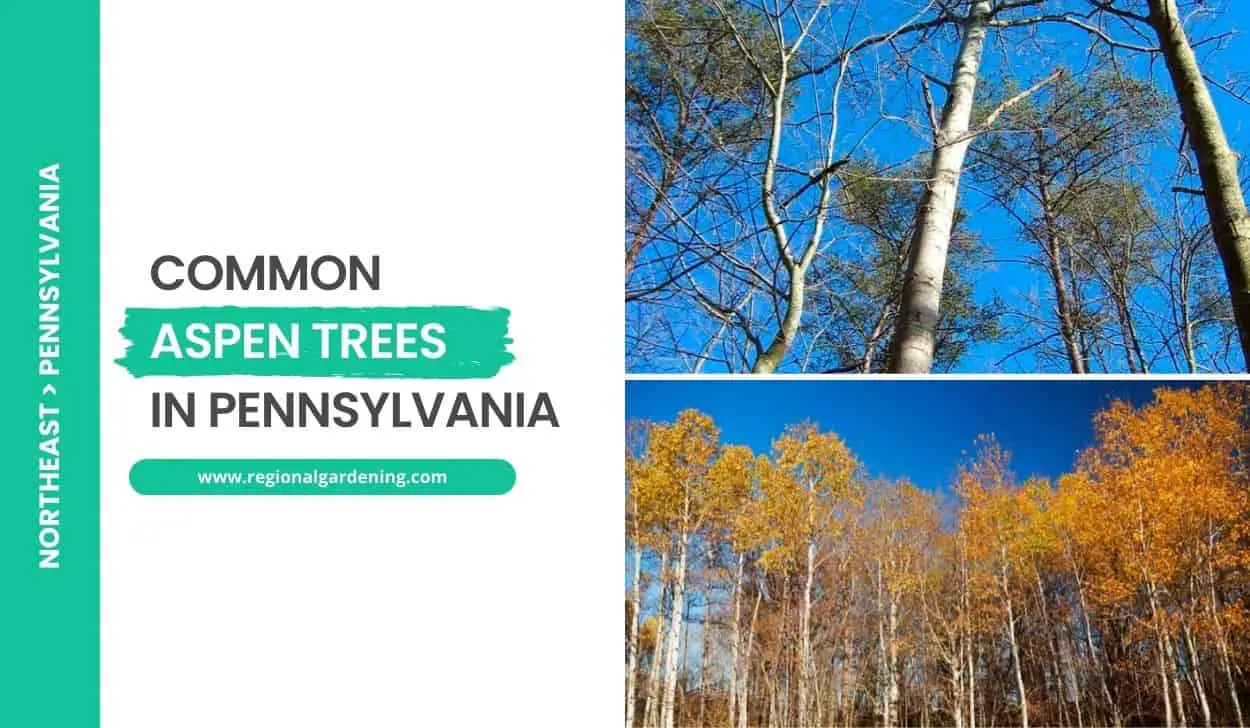
Pennsylvania is fortunate to have two native aspen tree species, each with its own distinct beauty and ecological significance. This article will look at two aspen trees found in the state, with stunning high-quality photos and detailed descriptions.
From the iconic Quaking Aspen, with its shimmering leaves and distinctive white bark, to the more understated Bigtooth Aspen, with its toothed leaves and elegant form, we will look at their characteristics, preferred growing conditions, and significance in Pennsylvania’s native ecosystem.
So, let’s begin exploring these two native aspen trees in Pennsylvania.
1. Bigtooth Aspen
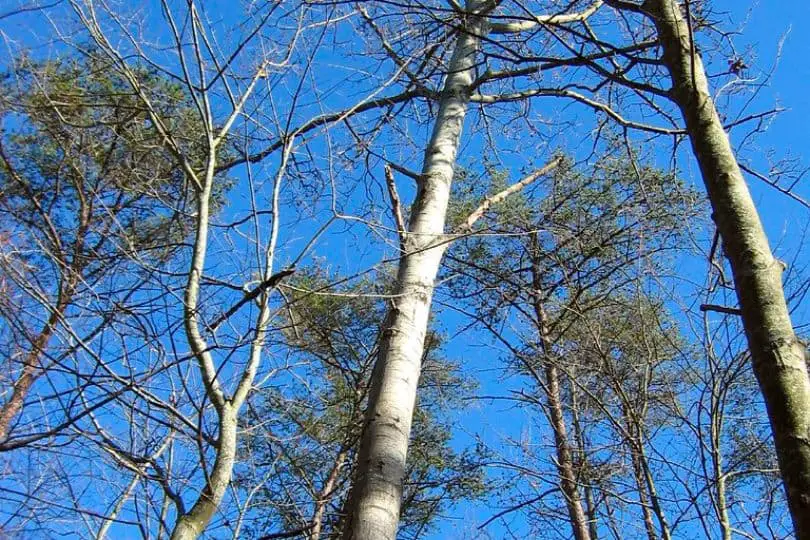
- Scientific Name: Populus grandidentata Michx.
- Common Name(s): Bigtooth Aspen
- Mature Height: 50′-70′ (15-21 meters)
- Native Region: North America
- Flowers: No Flowers
- Fruit: Cone-shaped capsules containing seeds covered with long silky hairs
- Uses: Regenerating forest cover, protecting soil, making paper
Bigtooth Aspen (Populus grandidentata Michx.) is a medium-sized tree that can grow to heights of 50 to 70 feet (15 to 21 meters). It is prevalent in early successional forests in Pennsylvania. The Bigtooth Aspen’s leaves are alternating, simple, and 3 to 4 inches long. They feature coarse teeth along the edges and are dull green on top and lighter underneath. The leaf petioles have flattened.
Bigtooth Aspen twigs are sturdy and dark, with a pale, woolly coating. Buds are blunt-pointed, dull, and frequently fuzzy. The Bigtooth Aspen’s fruit consists of cone-shaped capsules borne on a drooping stalk, similar to the quaking aspen. Long silky hairs protect the seeds inside the capsules.
When the Bigtooth Aspen is young, its bark is light gray to green, but it eventually turns dark brown and tough. This tree is essential for rebuilding forest cover and conserving soil, particularly in open regions destroyed by cutting or fire. Bigtooth Aspen seeds germinate best in open settings, and the tree can spread quickly by sending up suckers from its roots.
During the winter and spring, many species rely on the Bigtooth Aspen for nourishment. They feed on the tree’s twigs and buds. Furthermore, the wood of the Bigtooth Aspen is mostly used in the manufacture of paper. The Bigtooth Aspen is a vital tree in Pennsylvania landscapes due to its ecological relevance, contributing to the restoration and maintenance of healthy forests in the region.
2. Qualing Aspen
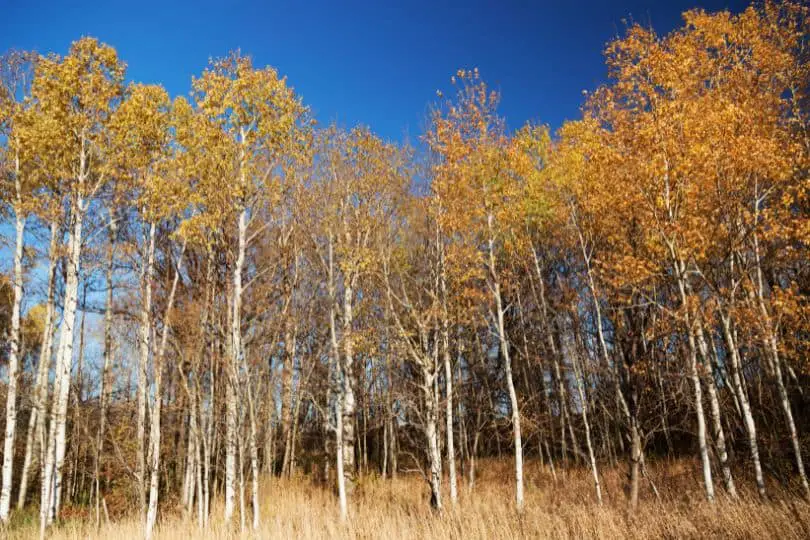
- Scientific Name: Populus tremuloides Michx.
- Common Name(s): Quaking Aspen
- Mature Height: 30-60 feet (9-18 meters)
- Native Region: North America
- Flowers: No Flowers
- Uses: Wood is used for pulp in paper and cardboard manufacturing, food source for beavers, soil stabilizer for land revegetation after disturbances.
The Quaking Aspen (Populus tremuloides) is a small to medium-sized deciduous tree that can grow to heights of 30 to 60 feet (9 to 18 meters). It is most common in northern Pennsylvania, but it can be found all around the state. The tree is well-known for its quick growth but short lifespan.
The Quaking Aspen’s leaves are simple and alternating, with a circular form ranging from 1 to 3 inches in diameter. The leaf margins are coarsely serrated, and the upper side is a lustrous dark green with a lighter tint below. The leaves become a magnificent gold hue in the fall, lending a colorful touch to the environment.
The Quaking Aspen twigs are slender and reddish-brown in hue. They are smooth and lustrous, with a five-angled white pith. The tree’s buds are sharp-pointed, smooth, and shiny, and often curled inward. Younger trees have delicate yellow-green to silvery gray bark, which darkens and gets rougher with age.
The Quaking Aspen produces cone-shaped capsules on 14-inch-long drooping stalks. Each capsule contains 10-12 seeds with long silky hairs covering them. The fruits develop in early summer, and the seeds are transported by wind, Their silky hairs make them well-adapted for long-distance distribution.
The Quaking Aspen is typically found in sandy or gravelly soils of ancient fields and open forests in Pennsylvania settings. Because of its broad roots, it is very useful for revegetating previously cut or burned regions. The tree’s vast root system aids in soil stabilization and erosion prevention.
Locally, Quaking Aspen wood is largely utilized for pulp in the production of paper and cardboard. Many species nibble the tree’s twigs, and it is a favored food source for beavers. With its appealing golden fall hue, the Quaking Aspen also offers aesthetic value to landscapes.
In order to care for Quaking Aspen trees in Pennsylvania settings, they must be planted in well-drained sandy or gravelly soil. They prefer direct sunlight to partial shade. Regular watering is required during the early establishment phase, although they are drought-tolerant once established. Pruning is required to maintain a healthy structure and reduce the danger of disease or harm.
Native Aspen Trees In Pennsylvania – Frequently Asked Questions (FAQs)
Check out the most commonly asked questions about native aspen trees in Pennsylvania that were asked on different online forums and threads.
Are aspens native to Pennsylvania?
Aspens are indigenous to Pennsylvania. They are common throughout the state, particularly in forests, woodlands, and along streambanks. Aspens are deciduous trees with distinctive, fluttering leaves that contribute significantly to Pennsylvania’s native plant diversity. They serve as habitat and food for a variety of wildlife species, as well as contributing to the state’s ecological landscape. The two native aspen trees in Pennsylvania are bigtooth and quaking aspen.
What should I consider before growing aspen trees in Pennsylvania?
Consider your local climate, soil conditions, and site selection before planting aspen trees in Pennsylvania. Check that your area has well-drained soil, a suitable pH level, and enough sunlight. As needed, test the soil and amend it. Plant at the recommended spacing (around 20-30 feet apart) to accommodate their mature size. Water young trees on a regular basis until they become established. Aspen trees can be a beautiful addition to your landscape, but proper preparation and care will ensure their success in the Pennsylvania climate.
Similar Articles
- Common Flowering Trees In Pennsylvania
- Common Maple Trees In Pennsylvania
- Common Cherry Trees In Pennsylvania
- Common Pine Trees In Pennsylvania
- Native Locust Trees In Pennsylvania
- Common Nut Trees In Pennsylvania
- Common Cedar Trees In Pennsylvania
- Common Palm Trees In Pennsylvania
- Common Birch Trees In Pennsylvania
- Common Oak Trees In Pennsylvania
- Common Spruce Trees In Pennsylvania
- Common Ash Trees In Pennsylvania
- Common Elm Trees In Pennsylvania
- Pink Flowering Trees In Pennsylvania
- White Flowering Trees In Pennsylvania
- Purple Flowering Trees In Pennsylvania
Sources
The Regional Gardening team makes sure that the information in our articles is accurate by only using sources that are known to be trustworthy. Some of these sources are peer-reviewed journals from government agencies, well-known universities, and scientific research organizations.
- Native Plant Resources, Pennsylvania Native Plant Society
- Trees & Shrubs Varieties, PennState Extension
- Landscaping With Natives, Pennsylvania Department Of Conservation, & Natural Resources.
- Explore Pennsylvania Forests, Pennsylvania Department Of Conservation, & Natural Resources.


